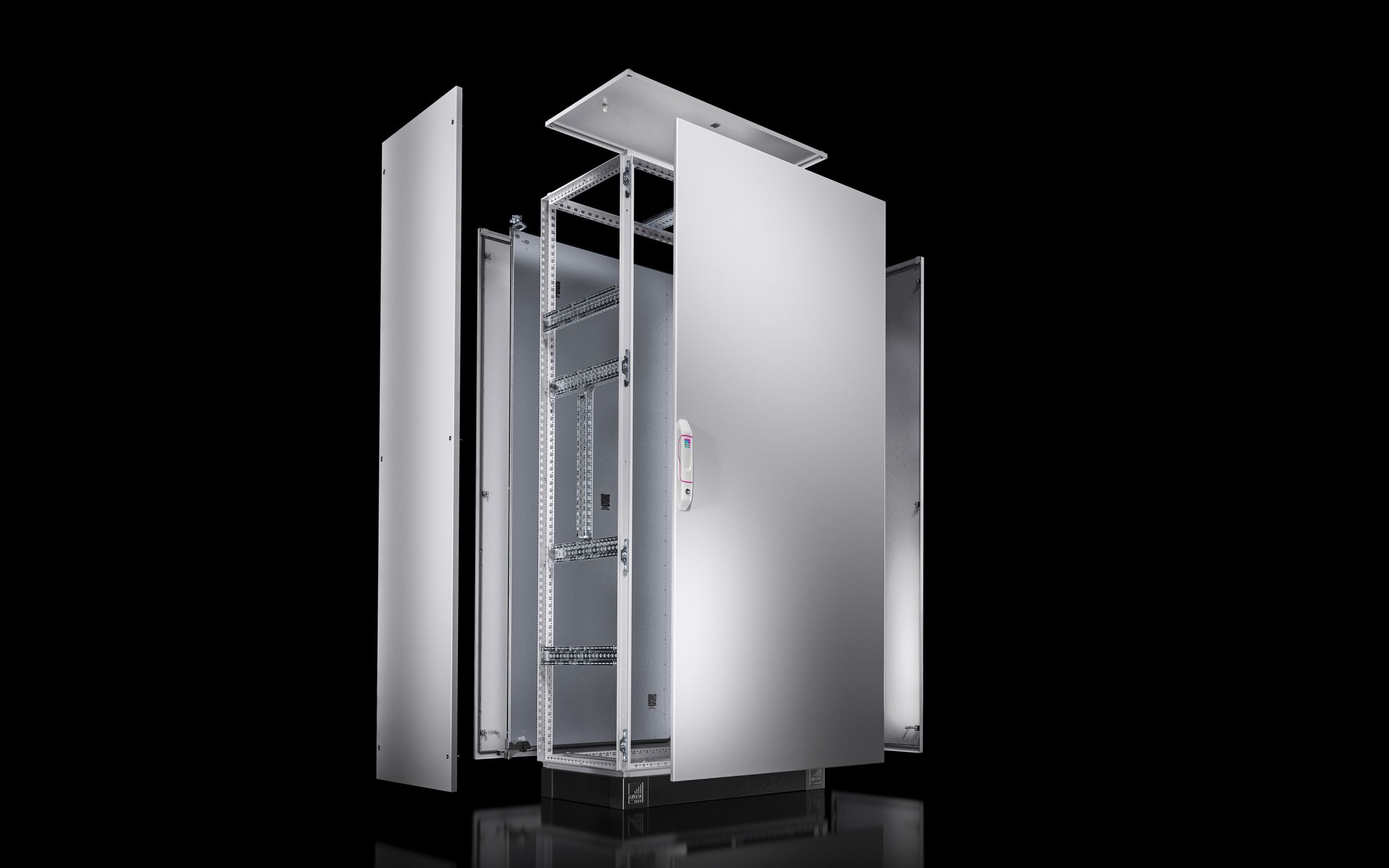Industrial enclosures are used to house electronic components, equipment, and devices. They protect personnel from accidental injury while the equipment is in operation and prevent the ingress of environmental contaminants such as dust and water.
Types
Many industrial enclosures vary based on size, rating, material, and what they are designed to encapsulate.
Console enclosures are freestanding and have a sloped front or top for mounting control components.
Console enclosures have a sloped front and can be mounted on either of two sides to provide a control surface with a 30° or 60° incline. These enclosures are used to house electric or electronic components and are ideal for mounting pushbutton and other operator control devices.
Modular enclosures have standardized dimensions and can be stacked or assembled to create larger cabinets or customized enclosures.
NEMA and IP enclosures house and protect electrical devices and electronic components. The National Electrical Manufacturers Association (NEMA) is responsible for assessing enclosures for indoor/outdoor use and hazardous and non-hazardous locations. Ingress protection (IP) discusses how the enclosures protect against foreign objects and moisture. In general, an IP rating of IP65 or better is needed for enclosures used in outside environments.
PC enclosures are designed to house personal computers (PCs) in industrial environments.
Rack enclosures or cabinets are designed to house standard 19-inch components or, other standards, rack-mounted devices.
Terminal boxes and junction boxes are rectangular enclosures that house electronic components and facilitate wiring.
Selection Considerations
When selecting enclosures, correct size and adequate protection are the priorities. The quality of protection, material type, and professional rating systems are the deciding factors.
Sizes
The size of an enclosure depends on what is being encapsulated. Industrial enclosures are rectangular or T-shaped and may include a sloped or slanted surface. They are made from various materials and are available in many different sizes, sealing configurations, and mounting styles. Enclosures may come in standardized dimensions or shapes that can stack for assembly or be custom-built to particular specifications.
Material Types
The amount of protection and durability an enclosure offers depends mainly on its material composition. Most industrial enclosures are made from materials classified as either metals or polymers.
Metals generally exhibit higher conductivity to both heat and electricity than other material types. Steel is widely used to form enclosures because of its strength and malleability. Stainless steel is used rather than standard steel in corrosion resistance and lightweight materials. Aluminum is a less expensive, light, and more conductive metal that exhibits good resistance to oxidation.
Polymer materials are nonmetal materials with varying properties. ABS is a complex, rigid, inexpensive thermoplastic polymer with good chemical and creep resistance but is prone to cracking under stress. Fiberglass is a strong, durable, reinforced polymer resistant to many caustics and extreme temperatures. Polycarbonate exhibits excellent impact strength and can be molded to tight tolerances but has only moderate resistance to chemical corrosion. Polystyrene is used for its rigidity, hardness, heat, dimensional stability, and ease of fabrication.
Rating Systems
NEMA ratings indicate whether industrial enclosures are suitable for hazardous or non-hazardous locations and designed for indoor or outdoor use. In addition, all NEMA enclosures protect personnel against incidental contact with the enclosed equipment. The chart below describes common NEMA enclosures types:
More Information On NEMA Ratings Can Be Found On The >IEEE GlobalSpec Help Page.
The Ingress Protection (IP) rating system from the International Electrotechnical Commission (IEC) describes the degree to which industrial enclosures protect against the ingress of foreign objects and moisture. Six IP ratings represent protection against foreign objects and vary from >50 mm particle protection to completely dust-tight protection. In addition, there are eight IP ratings for protection against moisture which range from dripping water protection to protection when completely submersed. The chart below is a quick summary of IP ratings. IP scores are given in “xx” combinations, where the first ‘x’ is the protection against solid objects and the second ‘x’ is protection against liquids.

